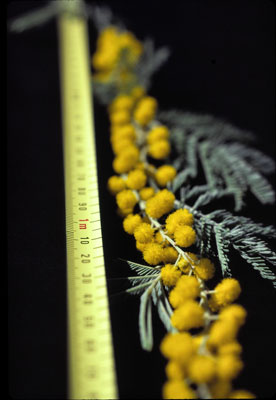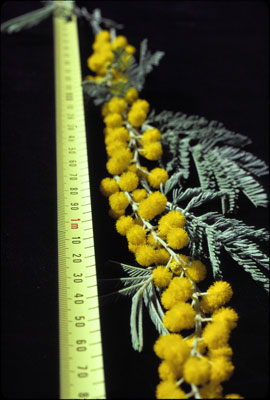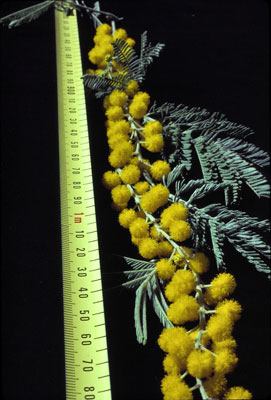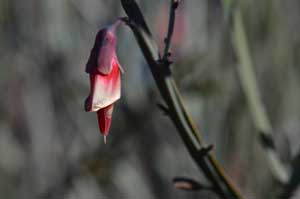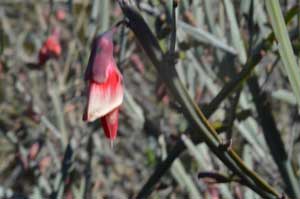Photographing Australian Plants
Depth of field — a simple outline
Depth of field is the term to describe how much of the photo, at varying distances from the camera, is in focus.
Depth of field is determined by the aperture setting on the lens (unless you use new techniques of splicing multiple images together).
The aperture is the adjustable hole in the camera lens through which the light passes to reach the camera's sensor (or the film on older cameras).
When that hole is very small, the light passes only through the central part of the lens with minimal distortion, and much more of the image is in sharp focus.
When the hole is very large, the light passes through a much larger area of curved lens and the distortion is greater, only a narrow plane of the image is in sharp focus.
Aperture is measured on camera lenses in 'f-stops'.
On a SLR camera these will be marked on one adjustable 'ring' on the lens.
Depending on the brand and lens, they can range from f 2.8 f 3.5 f 4 f 5.6 f 8 f 11 f 16 f 22 f 32
The lower the f number, the larger the 'hole' for the light to pass through; f 2.8 is a large hole, f 32 is a small hole.
Thus a photo taken at f 32 will have a greater depth-of-field than one taken at f 3.5 (see photo example below)
|
|
|
Aperture and shutter speed
There is a link between aperture and shutter speed.
If the 'hole' in the lens is smaller, it will take longer for the correct amount of light to get to the receptor or film to correctly expose the image.
The 'correct amount of light' in the rough diagram below is represented by the area of the shaded rectangle.
As the aperture gets smaller, it must be left open for a longer period of time to to allow the correct amount of light to get to the receptor or film.
The length of time the light has to pass through the hole is the 'shutter speed', usually in fractions of a second.
But although they are correctly fractions of a second, they are usually marked on the camera as plain numbers: 1/60 = 60, 1/250 = 250 etc.
Thus 250 (1/250 second) is a much shorter time than 50 (1/50 second)
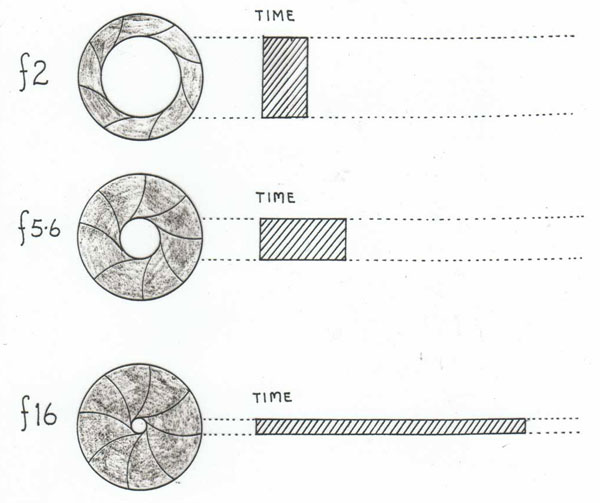
Thus on my Nikon D7000, all these combinations of shutter-speed and aperture for the same image will be correctly exposed:
30 (1/30 second) at f 29
100 (1/100 second) at f 16
250 (1/250 second) at f 10
500 (1/500 second) at f 7.1
So why not use the smallest aperture for the maximum depth-of-field every time ?
- Movement -– the plant is often moving in the wind, and unless you use a tripod the camera is also likely to be moving.
Thus at 1/30 second you will have good depth-of-field, but the photo will be blurred because of movement.
At 1/250 second you are most likely to stop any movement of either the plant or the camera, but the depth-of-field is less. - Isolating the plant -– often you want to have the flower in sharp focus but all the background foliage out-of-focus.
This will make the flower stand out from the background.
Thus you want a very shallow depth-of-field, (= large aperture = low f-number, maybe f 2 or f 2.5)
Example of flower photo taken at different shutter speeds on Nikon D7000 (click to enlarge)
![An Australian Government Initiative [logo]](/images/austgovt_brown_90px.gif)


